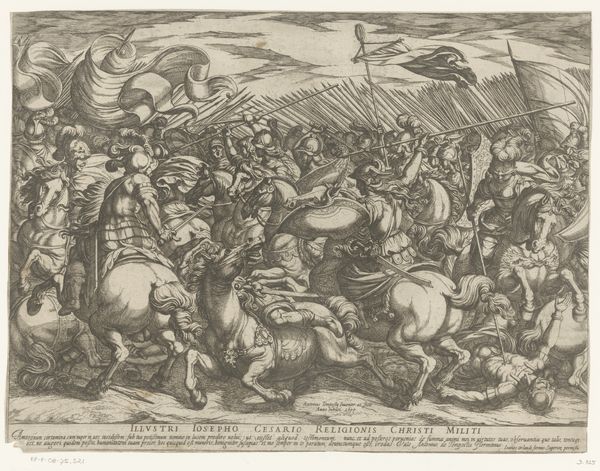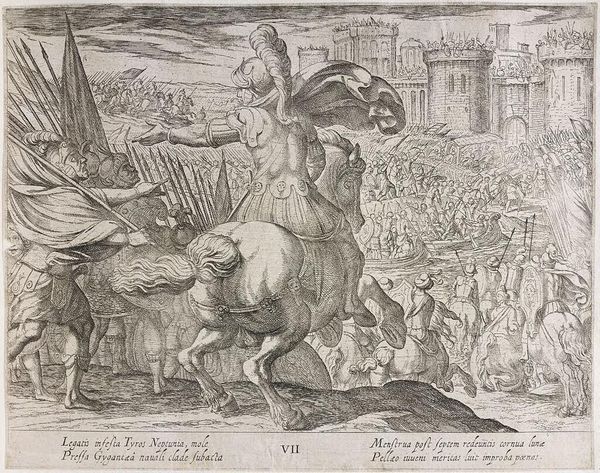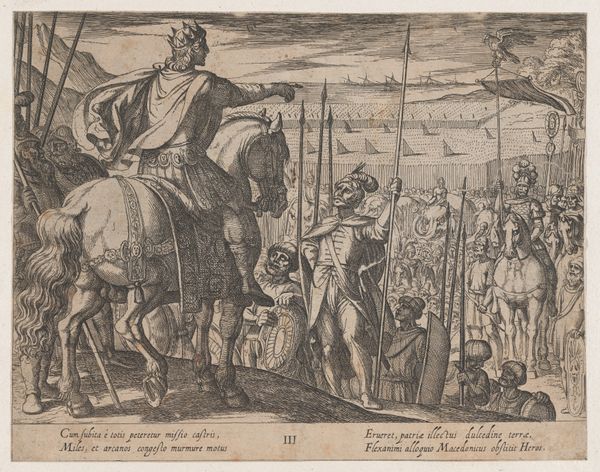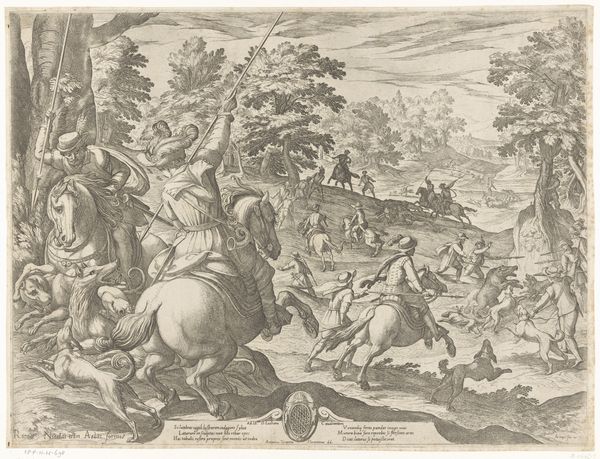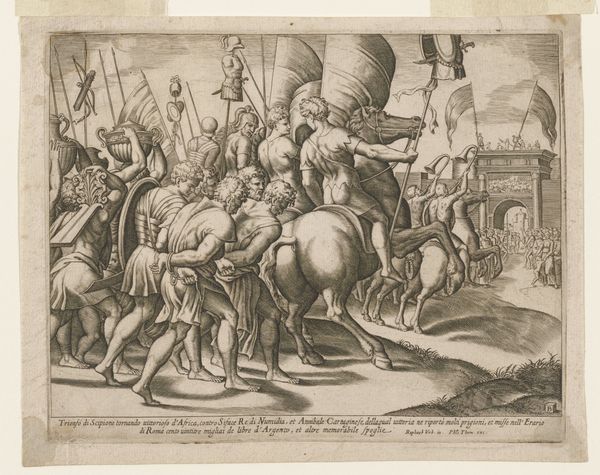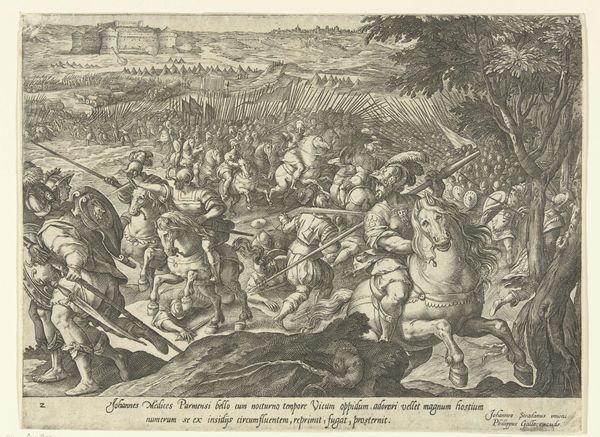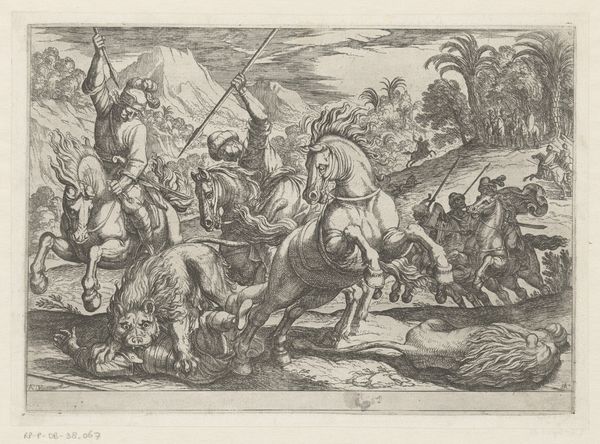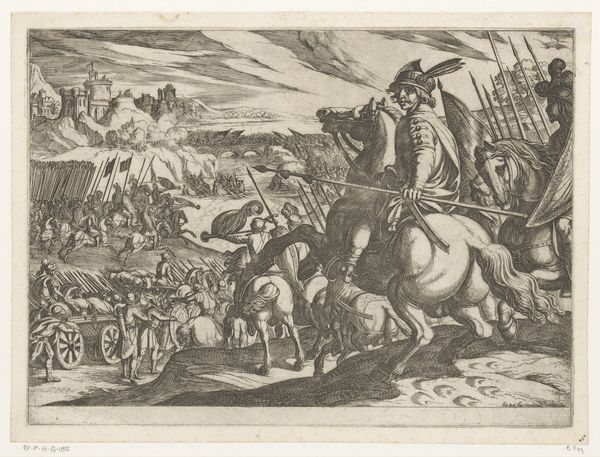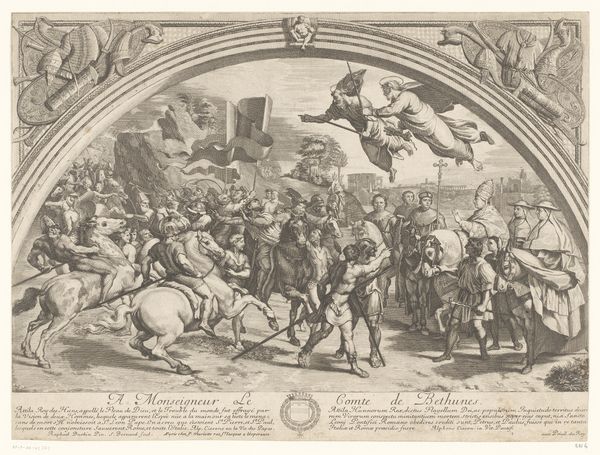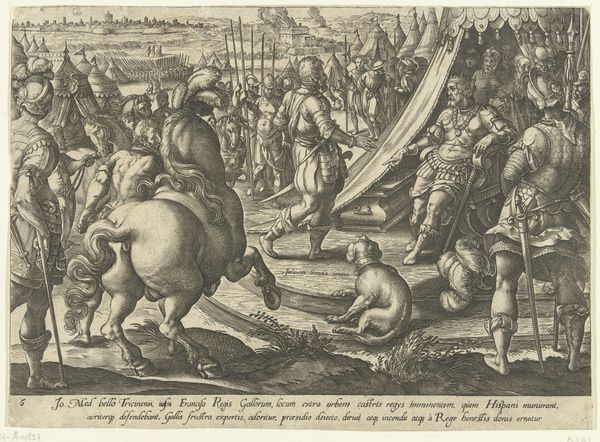
Plate 7: Alexander Attacking Tyre from the Sea, from The Deeds of Alexander the Great 1608
0:00
0:00
drawing, print, engraving
#
drawing
#
boat
#
narrative-art
#
baroque
# print
#
landscape
#
figuration
#
form
#
horse
#
line
#
cityscape
#
history-painting
#
engraving
Dimensions: Sheet: 8 11/16 × 11 1/8 in. (22 × 28.2 cm)
Copyright: Public Domain
Editor: This is Plate 7: Alexander Attacking Tyre from the Sea, created in 1608 by Antonio Tempesta. It’s an engraving, so black lines on a white ground, but incredibly detailed. The mood is…chaotic, lots of tiny figures clashing. How do you interpret this work? Curator: This print encapsulates the brutal reality of historical narratives. Note the emphasis on Alexander, centered and elevated, embodying power. Yet, this image begs us to consider: Whose story is being told, and at what cost? Consider the people of Tyre. Editor: You mean the cost to the people who were attacked and defeated? Curator: Precisely. We must recognize the violence inherent in the creation of empires and challenge the celebratory tone often adopted in depictions of historical conquerors. How does the city, rendered in such detail, become a backdrop to Alexander's supposed glory? Editor: It’s like…their suffering is just part of the landscape, almost invisible. Curator: Indeed. And we see that the very landscape is actively being reshaped. Note how Tempesta captures that moment of intense disruption of not just a city, but its people and their environment, which calls into question progress at what price. Editor: I hadn't thought of it that way, as disruption… Curator: Examining prints like this allows us to engage with the uncomfortable truths often glossed over in grand narratives of conquest. This is baroque, full of action, yet allows a point to think about these events critically. It also serves as a historical lens to address inequalities that may mirror issues from centuries ago to current geopolitical climates. Editor: I will definitely think about historical depictions differently from now on. Thanks! Curator: A critical lens is key! It allows art to engage with the present as well as the past.
Comments
No comments
Be the first to comment and join the conversation on the ultimate creative platform.

